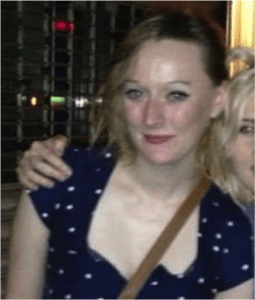Media Contact:
Nalini Padmanabhan
ASHG Communications Manager
301.634.7346
press@ashg.org
For Immediate Release
Friday, October 9, 2015
4:45 pm U.S. Eastern Time (UTC-05:00)
Findings Reported at ASHG 2015 Annual Meeting

BETHESDA, MD – By combining genetic data, ancestry information, and electronic health records, scientists are able to identify neighborhood-level patterns of migration in the New York City area, according to research presented at the American Society of Human Genetics (ASHG) 2015 Annual Meeting in Baltimore. In addition to supplementing historical and census data, these sorts of findings can inform biomedical and public health efforts in New York and other locations, the study authors said.
“New York City is an important point of entry and immigration, and has long been one of the major ‘melting pots’ of the world. The population structure there is complex and interesting from a variety of perspectives, including the genetic one,” said Gillian Belbin, MS, a graduate student at the Icahn School of Medicine at Mount Sinai (ISMMS) and first author on the study.
“These days, other cities such as London and Shanghai are reaching the same levels of diversity as New York, and many of our methods and findings can be applied to those cities’ populations as well,” added Eimear Kenny, PhD, Assistant Professor at ISMMS and senior author on the study.
Ms. Belbin and her colleagues are investigating a variety of questions related to migration into New York City, population transitions among its ethnic enclaves, and effects of historical events and trends on recent generations as well as during the last few centuries. They are using the ISMMS BioMe Biobank, an anonymized database of electronic health record and genetic information from more than 32,000 ISMMS patients who have volunteered to share their medical data with researchers. The genetic data, which includes about one million markers across the genome, is compared among individuals, among populations, and between current and ancestral populations to determine hidden patterns of relatedness, sort individuals into groups that share genetic characteristics, and find correlations with genes of medical relevance.
For example, the researchers identified a group of distantly related New York residents of Puerto Rican ancestry who were more likely than others to have Steel syndrome, a genetic skeletal and muscular condition characterized by short height, hip dislocation at birth, and spinal issues later in life. Last year, they were able to use this information to identify the gene that causes Steel syndrome, a finding that could lead to targeted screening for this condition among certain groups.
The researchers have also genetically compared groups of New Yorkers with ancestral populations outside of the city, producing analyses that enrich scientific understanding of historical events. An example is the Garifuna people of Central and South America, a population that originated in the late 1600s when an African slave ship foundered off the coast of Venezuela. In the years that followed, the survivors of that event reproduced with Native populations, and many of their descendants form communities in New York today.
“What was interesting about Garifuna descendants in New York is that, unlike almost every other population in the Americas, they had no genetic evidence of European ancestry,” Dr. Kenny said. “This reflects the initial historical event that brought their ancestors into contact as well as a lack of mixing with other groups since then.”
The researchers are now conducting preliminary analyses of neighborhood-level data. “We want to understand how people belonging to these smaller communities relate to one another, within and between communities, and how these patterns change over time,” Ms. Belbin said.
Presentation: Ms. Belbin will present her research on Friday, October 9, 2015, from 4:45-5:00 p.m., in Holiday Ballroom 4 of the Hilton Baltimore Hotel.
Press Availability: Ms. Belbin and Dr. Kenny will be available to discuss this research with interested media on Friday, October 9, 2015, from 12:00-12:45 p.m., in the ASHG 2015 Press Office (Room 301).
References: Belbin G et al. (2015 Oct 9). Abstract: Reconstructing the population history of New York City. Presented at American Society of Human Genetics 2015 Annual Meeting. Baltimore, Md.
About the American Society of Human Genetics (ASHG)
Founded in 1948, the American Society of Human Genetics is the primary professional membership organization for human genetics specialists worldwide. Its nearly 8,000 members include researchers, academicians, clinicians, laboratory practice professionals, genetic counselors, nurses, and others with an interest in human genetics. The Society serves scientists, health professionals, and the public by providing forums to: (1) share research results through the ASHG Annual Meeting and in The American Journal of Human Genetics; (2) advance genetic research by advocating for research support; (3) educate current and future genetics professionals, health care providers, advocates, policymakers, educators, students, and the public about all aspects of human genetics; and (4) promote genetic services and support responsible social and scientific policies. For more information, visit: http://wptest.ashg.org.
9650 Rockville Pike | Bethesda, MD 20814 | 301.634.7300 | society@ashg.org | www.ashg.org
Connect with ASHG on Twitter (@GeneticsSociety) | Facebook | LinkedIn
